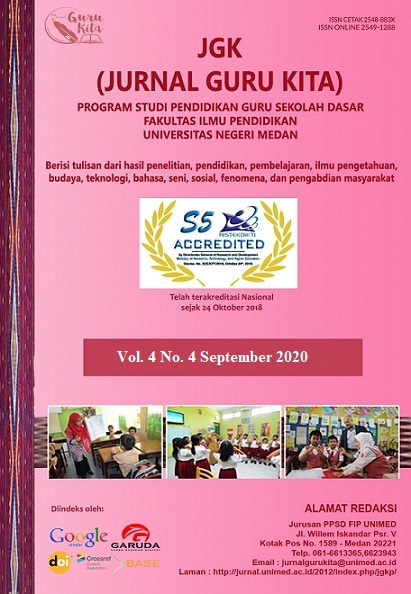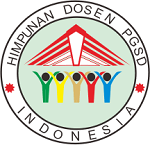APLIKASI MOBILE LEARNING UNTUK PEMBELAJARAN BAHASA INGGRIS DI JURUSAN BIMBINGAN DAN KONSELING UNIVERSITAS NEGERI MEDAN
DOI:
https://doi.org/10.24114/jgk.v7i1.41565Keywords:
Mobile Learning, Android, English for Counseling.Abstract
Mobile Learning For English Subject In The Department Of Guidance And Counseling Universitas Negeri Medan. The purpose of this study was to determine the shape of the android based Mobile Learning needed by students majoring in guidance and counseling Unimed on learning English. This research has been conducted using ADDIE development model. Media experts give excellent ratings for throughout the all item of Media assessment. This application is tested on 30 students of the 1st half of Guidance and Counseling Department of the Faculty of Education Unimed. The results of calculations throughout the student questionnaire responses obtained 87.15%% percentage of aspects of good feelings, 86.57% of the student's interest aspects of the use of the application, 85.85% of aspects of attention, and 88.24% of aspects of student involvement.References
Ananga, P., & Biney, I. K. 2018. Comparing Face-To-Face And Online Teaching And Learning In Higher Education. MIER Journal of Educational Studies, Trends and Practices, Vol. 7, No. 2.
Cher Ping Lim & Daniel Churchill. 2016 Mobile learning, Interactive Learning Environments, 24:2, 273-276, DOI: 10.1080/10494820.2015.1113705.
Seary, K, James, T & Conradie, H. 2014, Designing practical strategies to increase STEPS students' attendance at face-to-face, on campus classes, paper presented to the FABENZ: Challenges & Innovation Conference 2014, Tauranga, New Zealand
Patricia Ananga & Isaac Kofi Biney. 2017. Comparing face-to-face and online teaching and learning in higher education. MIER Journal of Educational Studies, Trends & Practices November 2017, Vol. 7, No. 2.
Paulins, N., Signe, B., and Irina, A. 2014. Learning Content Development Methodology for Mobile Devices. Procedia Computer Science, 43,
Staker H, Horn MB. 2012. Classifying K “ 12 Blended Learning. Innosight. Institude.
Mugenyi Justice and Edmond Kagambe. 2017. Blended learning effectiveness: the relationship between student characteristics, design features and outcomes. International Journal of Educational Technology in Higher Education, Vol. 14, No. 1, 7,
Whitelock, D. & Jelfs, A. 2013. Editorial. Special Issue on Blended. Learning Journal of Educational Media. Journal of Educational Media,. 28(2), hlm. 99.
Husamah. 2014. Pembelajaran Bauran (Blended Learning). Prestasi Pustakara: Jakarta.
.
Effendi, E, Zhuang, H. 2005. e-learning, Konsep dan Aplikasi. Andi Offset: Yogyakarta.
Nasrudin Safaat. 2012. Android Pemrograman aplikasi Mobile Smartphone Dan Tablet PC Berbasis Android. Informatika: Jakarta.
Downloads
Published
How to Cite
Issue
Section
License
Authors published with the JGK (Jurnal Guru Kita) agree to the following terms:
- Authors retain copyright and grant the journal the right of first publication with the work simultaneously licensed under a Creative Commons Attribution License (CC BY-SA 4.0) that allows others to share the work with an acknowledgment of the work's authorship and initial publication in this journal.
- Authors are able to enter into separate, additional contractual arrangements for the non-exclusive distribution of the journal's published version of the work (e.g., post it to an institutional repository or publish it in a book), with an acknowledgment of its initial publication in this journal.
- Authors are permitted and encouraged to post their work online (e.g., in institutional repositories or on their website) prior to and during the submission process, as it can lead to productive exchanges, as well as earlier and greater citation of published work. (See The Effect of Open Access)













